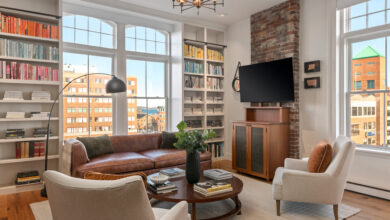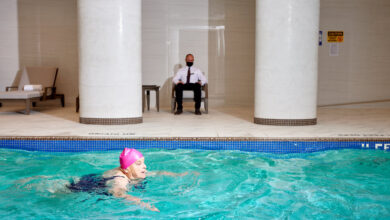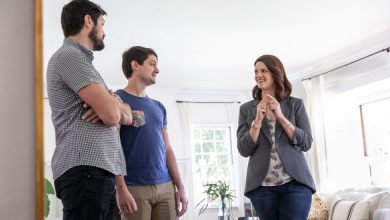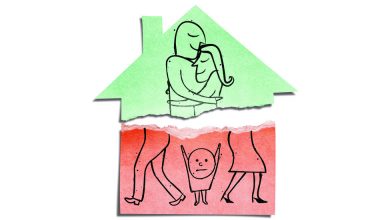Want to Make Music at Home? Start With Soundproofing.
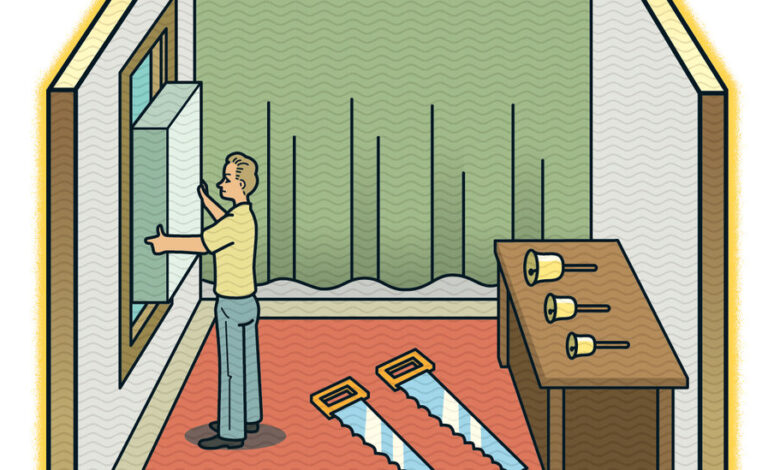
[ad_1]
Stuck at home but itching to compose and perform music, professional and amateur artists turned their living rooms and bedrooms into makeshift studios. But they were quickly reminded that they could disturb their neighbors. A lucky few had the time, space and patience to build full-fledged, soundproof musical ateliers.
Two professional musicians became DIYers when they could not open their home to a professional to help them because of a lockdown; a composer took action when the pandemic took her off the road; and an author was determined to create a safe space for his friends to get together.
Here’s how they did it:
Bells Are Ringing
Natalia Paruz, 45; Scott Munson, 50
Location: Astoria, Queens
Instruments Involved: Ms. Paruz is a professional bell ringer, musical saw player, and an occasional harpist. She has several musical saws of different makes, lengths, widths and tapering, and also owns a theremin, an electronic musical instrument. She treasures her glass harp — “popular in the 1800s as a home parlor instrument,” she said, that was made before 1886. Mr. Munson, her husband, has a grand piano, a vibraphone and a drum set. He, too, is a professional musician, with his own jazz band.
The Scene: The couple owns a two-family house, with the tenants right upstairs. In 2020, “I spent more time in that house than I have ever done,” Ms. Paruz said. Of course, so did the tenants. Ms. Paruz said the proximity of her renters used to keep her from practicing, but not anymore. “I practice the bells daily,” she said. “I have church gigs, and they are loud!”
Soundproofing Philosophy: They had hoped to hire professional help to soundproof a room in her house, but lockdown made that impossible. So Ms. Paruz spoke to fellow musicians to get a few ideas. Luckily, the house had double-pane windows when they bought it.
The Job: The double-pane windows helped, but more needed to be done, so they added foam squares to block the sound. “When we record, we hang heavy blankets on the walls.” One blanket is made for sound absorption and can be purchased online. “The other is just a regular quilt, so I sewed rings on it to enable hanging it.”
Total Estimated Cost: $600
A Composer’s Studio
Cheryl B. Engelhardt, 42
Location: New Paltz, N.Y.
Instruments Involved A composer, Ms. Engelhardt, has been a full-time musician for over 15 years. She plays the piano, some percussion, the ukulele and “a tiny bit of clarinet,” she said. Ms. Engelhardt was nominated for a Grammy this year for her New Age album, “The Passenger,” which was written and composed on a train but mixed in her studio before the renovations.
The Scene: She bought her three-bedroom house in 2016 for $349,000. It came with a bonus room with slanted angles that she turned into her studio. “I have always had my own studio in my house,” she said, and she always wanted to redo it.
Soundproofing Philosophy: The pandemic was the trigger she needed, since she was spending much more time indoors. She currently uses the studio to write music, mix her work, as well as operational activities. “Before Covid, I used the space for recording sessions with others,” she said. It is where she and her late collaborator, Kevin Archambault (who died of cancer in early 2022), co-wrote the musical, “Boiler Room Girls.”
The Job: Earlier this year, she renovated her studio entirely, which included flooring ($818), enlisting the services of an interior designer ($1,180), a desk ($540), sound treatment ($494), and carpenters to install a shiplap wall (a bead board, a textured wall that gives it a different depth and look). “It took the place of wallpaper or an accent wall, and anytime there’s some texture, that helps with the sound,” she said.
Unwanted Noises: She added an extra layer of hardwood flooring in the space. “My studio is on the top floor of the house, almost like an attic, and I wanted something that wouldn’t creak too much. The floor was old plywood and I could hear the television downstairs and the phone, and now the flooring absorbs all the noise,” she said. “I am so happy with the new space, I want to work in there.”
Total Estimated Cost: Nearly $6,000
Gathering Friends
Jason Reynolds, 38
Location The Kingman Park neighborhood of Washington, D.C.
Instrument Involved A Kingsbury upright piano, which was one of the first things moved into the renovated space. It is now a centerpiece of the festivities when friends visit.
(Nonmusical) Profession: Mr. Reynolds is an author of novels and poetry for young adult and middle-grade audiences (two of his most popular books include “Long Way Down,” a novel in verse about a single minute of a young man’s life; and “Ghost,” about a boy who discovers family and confidence after a chance encounter on his middle school track team).
The Setup: He owns a four-story rowhouse in Washington D.C., with a roof deck built in 1922. He bought the house in two stages: First, he bought the basement and first floor as his primary residence in 2018 for $699,000, and then, when the owner decided to move, the two top floors in 2020 for $860,000.
Soundproofing Philosophy: His dream was to create a salon and gathering space on the top two floors of the house. “I built this music room and lounge space, trying to build it so that my pod — my friends — had a safe and comfortable space,” he said.
Materials Used: “We were always going to soundproof this room,” said Annie Elliott, a designer who helped Mr. Reynolds with the design. Ms. Elliott said she wallpapered the room with a millimeter of a cork product, and the layers help with soundproofing.
[ad_2]
Source link


